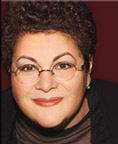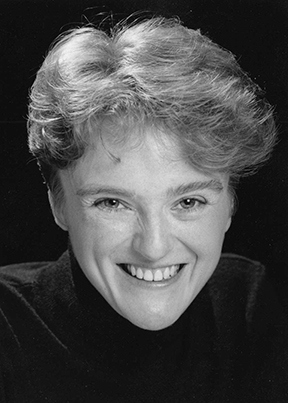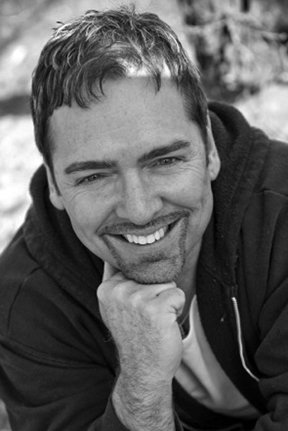|
|
||
We often hear child violinists and other types of child performers who can achieve amazing musical feats. But the ultimate question in the end is whether or not this is healthy for the child’s growing body and, just as importantly, how does the pressure to perform impact their emotional life? The physical and emotional problems that can develop over time from placing adult expectations on a child are rarely considered. But the adult community, and more importantly concerned parents, might want to prioritize learning about these physical and emotional risks. Training Children’s Voices: In considering the phenomenon of the child prodigy, I have observed numerous techniques in training children’s voices; many conflicting in their definition of what is healthy vocalism. There is a trend (especially in commercial contemporary music) toward giving children voice lessons at a very early age, as early as 5 or 6 years old. I am adamantly opposed to this because it is just too young to safely give children singing lessons. Some of these singing techniques that are pop or music theater based encourage heavy belting, which most vocal professionals agree can be extremely abusive and damaging to the voice, especially for young voices. One major reason that belting is a popular type of instruction is that we live in a society that thinks louder is better, which is a huge mistake. Heavy belting creates a large sound, but it is wrong for any voice, resulting in real danger for any child’s voice. Learning limited range folk songs or sight singing in a limited range is fine at an early age, but singing lessons that focus on producing big adult sound can damage the young voice in a short period of time. Considering that fame or ‘living a parent’s dream’ can often take priority over what is best for the child, we need to develop public awareness on what is healthy singing for a child. There seems to be little knowledge of what constitutes damaging techniques in training children’s voices. A young larynx should never have the same vocal pressure placed upon it as an adult larynx. In truth, there should never be such a thing as a ‘child vocal prodigy’. Children who make adult sounds often use laryngeal tongue depression and/or an overstretching of the laryngeal muscles, a damaging practice that has robbed many young singers of their healthy voice. Over-singing or under-singing can be destructive to the young voice during the process of the voice changing in puberty. One need only look at the career of Charlotte Church, who tried to David Bjoerling, the Father of Jussi Bjoerling taught his boys early in their training. But there is a strong indication that they were trained quite well and carefully since David Bjoerling studied with Enrico Caruso. Child Singer / Actor: About 18 years ago, I befriended a musical theater coach who lives in my neighborhood on the Upper West Side of Manhattan. At her request, I began teaching her son when he as 10 years of age. I do not usually teach singers that young, however he was actively auditioning and taking Broadway and film roles, so she wanted him to find maximum release in his voice. I started vocalizing him on the Lindquest vocal exercises, cutting them down to a limited range, which educated both registration balance and a vocal protection in his singing. We also used vowel sequences that helped to blend chest voice and head voice, rather than allowing him to use too much chest mechanism through belting. As his voice changed we kept his falsetto range in tact, which allowed the laryngeal muscles to feel a larger degree of release. We also worked the cuperto [u] vowel and the [ng] to be sure he found his space and ring without squeezing the laryngeal muscles. This proved to be a magical combination for this singer, because it allowed his voice to change gradually and naturally without developing the typical high larynx reach reflex that is often present in the singing of so many young male singers. After years of study, he has kept his vocal health to this day, mainly due to the fact that we were extremely careful and gentle with his voice over the years. The Lindquest exercises kept the thin edge function of the folds in tact during the voice change, something that encouraged resonance development and blending of the registers. Years ago when the musical Annie was on Broadway here in New York, I received a phone call from the agent of a child who was in the show. I could hear the panic in her voice. Her client, age 9, had been diagnosed with a vocal polyp by a prominent ENT in New York. The agent nervously said, “I hear that you can fix voices and she MUST go on tonight!” I quickly informed her that a polyp is a serious problem in any voice, especially a child’s voice, and that she must first consider that her vocal health and future singing ability was at stake. Immediately her tone of voice changed and she agreed that the child should be exclusively under the care of an excellent ENT who specialized in working with singers. In this case, I left the child’s future up to the laryngologist. Confronting this agent made her consider the future vocal wellbeing of this child performer. We desperately need more research about vocal health in the child’s voice, because there is little attention paid to the physical demands on the child’s voice in professional settings. This article is designed to offer awareness to the adult community regarding what is actually healthy for a child’s vocal development. Abusive Teaching Practices I personally have a list of teaching practices that I find abusive to the voice, but especially abusive to a child’s voice. At the top of the list would be heavy belting, using chest mechanism pulled high in pitch. In a child’s voice this practice can injure the singer in a short time, often leaving them with polyps, nodules, or vocal hemorrhages. How often have we heard an adult teacher say, “Belt it on out”! This is a command that I find personally EXTREMELY upsetting. Not only does it send the message that ONLY loud singing is good singing, but it also sends the message that a child’s sound is not good enough, inviting the young student to push the voice with too much breath pressure. I consider heavy belting the beginning of the end for any child’s voice and many adults are in love with this sound. It is also the sound that young people hear in pop music consistently. BUT consider that the only pop singers that last are the ones that mix some head voice into their sound and those that develop the head voice.
A child cannot make adult sounds without engaging the tongue-root and hyper-extending the laryngeal muscles. This practice puts unnecessary pressure on the vocal folds, and over time you have vocal damage. I recently received a letter from a Mother of a 13-year-old girl who was suffering from dysphonia in the middle voice. After investigating her history, this child had been singing Verdi at age 11. Any voice teacher should know that this is child vocal abuse and it must be defined and recognized so that parents can protect their child’s voice. Then this young singer worked with a voice therapist who was giving her herbal remedies for thyroid disorder, even though she had not been diagnosed with thyroid disorder. The voice therapist was also teaching her a smile technique, which raises the larynx position and causes irritation of the vocal folds. When I receive these kinds of emails, I am totally amazed at the ignorance regarding the child’s voice and the disorders caused by abusive teaching, sometimes by certified professionals. We CAN educate the public that children should sound like children, NOT adults. A child’s voice must be allowed to sound like a child’s voice until the larynx grows and drops, and until the vocal folds are fully developed. Famous Pop/Rock Singer / Healthy Sound Abusive Practices in the Child’s Voice: 1. Heavy belting: taking chest voice higher than is healthy. I decided that I wanted to present an article that involved vocal professionals that work with children’s voices on a frequent basis. The following interviews are designed to help the general public in learning how to be careful with the child’s voice. Sophie Lair – Berreby / Voice Therapist / New York City
Jane Emmanuel / Vocal Instructor / Peterborough Cathedral / England 1 2. Are there specific considerations that you find critical in training children's voices? Yes absolutely. Depending upon the age the larynx is still forming and changing, gradually sitting lower down and still on the way to calcification. The muscles are not fully developed either in size or flexibility and the cavities and lungs are by nature smaller than in an adult. Some children present with a very small pitch range which could be high or low and some have no concept of the lighter mechanism and will just push their natural core voice up through the range, which leads to out of tune singing and vocal fatigue. This can eventually lead to something of a hole in the range and reluctance to use the head voice because it seems so weak by comparison to the chest register. Children these days are surrounded by the sound of the 'pop' world and want to imitate these sounds without having the vocal maturity for this to be a realistic goal. 3. Have you worked with children that you felt were injuring their voices by misuse or incorrect singing? I have worked with children whom I felt were in danger of vocal injuries in their attempt to sing either beyond their natural comfort zone in range, attempting to take the wrong voice quality too high. It often takes the form of trying to sing something that has a tessitura that was beyond their technical ability to maintain, a range of dynamic level that they could not hope to produce healthily, a length of vocal line that they are trying to sustain on one breath when they clearly do not have enough lung capacity nor the technical ability to reach the end without squeezing the instrument and contorting the body. In this age of 'can do' there is a mismatch between expectation and possibility of achievement. First of all a lesson has to have an element of fun about it - I don't think a child will develop well in a draconian environment. The voice must be treated with great care - we can't just go out and buy the next new model - there is no patron to lend us a 'Pavarotti' or a 'Callas'. Short exercises over a small range to start with, an understanding of gentle breathing and how to use the abdominal muscles to help the sound to flow, good posture (whole body) and a great deal of emphasis on the aural skills - if they can't sing in tune over a small range of mainly next door notes they are going to have major problems when they come to a song with a normal pitch range let alone something more advanced. 5 Do you have specific details that you wish to share considering how to be more careful with a child's voice? It is advisable to enquire after general and vocal health before starting a lesson - however be aware that a child can be so keen to have the lesson proceed that they might not give you an entirely truthful answer about it. For example, the fact that they have a cold or sore throat - leaving it up to you to hear it in the voice and then gently ask again. Always make sure that the voice is properly warmed up before use - it cools down within 30 minutes of stopping singing so a few exercises after a break will re-elasticate it for the next session (I teach choristers who have a rehearsal at 8 am most days, may then have a lesson with me during the day, rehearse again after school and then sing a service before going home to eat, do homework and other instrumental practice (sometimes to include solo vocal work). The teacher must listen very carefully - if the voice is not flowing ask the questions - is the student physically healthy, might there be a particular reason that day for inconsistency, loss of range or clarity or sluggishness (with special consideration going to teenage girls) - in the case of any child perhaps an emotional upset... and take action accordingly. Try to get to know what makes the child tick (what else do they enjoy - a sport maybe) - do they listen to what you are saying and how quickly can they interpret it correctly and put it into practice - more detailed work can only be done if the basics are in place and if the brain /mind / psyche is developed enough and willing to receive the information. Go slowly or you will miss vital signs along the way. Many circumstances can be responsible for a voice being unbalanced and not working as normal. The emotional state of a child is central to the learning and experiencing process. Be very careful how you phrase any 'criticism' of what they are doing and don't forget to find something positive to say each time. Without encouragement they will get frustrated (leading to unhelpful tension) or fed up. Don't forget to be enthusiastic and give praise even when going over old ground for seemingly or even actually the 100th time. My areas of working would come in the order of posture, breathing and a healthy airflow then leading to the mechanics of production. A good sound is the first goal (this would include making sure that there are plenty of places to breathe), words come a close second (and here much detailed and fun work can be done on diction) and then in a song we would study the mood and meaning and talk about how to find the correct energy levels or emotions to put it across - of course all of these work together to produce the final performance and I might well introduce the last element very quickly - I certainly would not wait for a song to be fully technically proficient before doing so as in my experience one's approach to the meaning of a song can often if not always ease technical difficulties. Very importantly think hard about the repertoire that you offer them - just how challenging is it - not only technically but emotionally and musically. As singing teachers of youngsters we can often find ourselves presented with a novice at singing who is an advanced musician in another discipline and / or a high achieving academic. Their perception of the various qualities of the songs we offer them will play a huge part in their willingness to apply themselves to the detailed work they will need to do, time and time again to achieve progress. At the other end of the scale if the music is too technically challenging then practicing it over the week can undo all the good work done in the lesson. I record lessons for my students - the youngest to the oldest - so that they can listen to exactly what was said without having to rely on a memory that might not be 100%. Interview: Jeff Stanfill 2) Are there specific considerations that you find critical in training children’s voices? 3) Have you worked with children that you felt were injuring their voices by misuse or incorrect singing? 4) What is your personal philosophy or approach in working with a young child’s voice? 5) Do you have specific details that you wish to share considering how to be more careful with a child’s voice? 6) What is your biggest concern in regard to the child vocal prodigy phenomenon that seems to be popular today? Julia Hunt-Nielsen / Faculty / San Francisco Girl’s Chorus / Private Instructor / San Francisco, CA
My personal philosophy in working with girls’ voices is simple, and I think reflects the best intentions of all who work with girls. The challenge becomes carrying it out with sensitivity and nuance. First, do no harm. Like any good doctor, the voice teacher’s prime directive when dealing with young voices is to first, do no harm. Girls and young women must not be asked to engage in extreme vocal behaviors, such as singing in extreme tessitura, at extreme dynamic levels, or for extended periods of time. They must not be expected to sing repertoire that requires these things. Who would disagree with this? Not too many, of course! But the challenge is to develop a thorough and yet flexible definition of what “extreme” might mean for girls of various ages. Is it "extreme" for a 12-year-old soprano to sustain a high A? To ask a 7-year-old to stand and sing for a two hour rehearsal? The answers, of course, may depend on many variables. (How often does the soprano sing that high A? At what dynamic level? How mature is that 7-year-old?) Know each girl; know each voice. It seems self-evident, but every person is different; every voice is different. While this is clearly true of all singers, it is especially important to know each individual girl and her individual voice while her instrument is growing. Sometimes, when a girl comes back to the studio or the choir after her summer vacation, she may find a significantly different voice! (If anyone is unfamiliar with the specifics of female voice change during puberty, please consult reputable resources, such as those by Lynn Gackle.) High notes that were totally effortless before may now feel uncomfortable. Register breaks may have suddenly appeared or become more obvious. Lay a firm foundation. I believe that too often, in a truly well-meaning attempt to “do no harm”, teachers and conductors who work with children believe that it is appropriate, even “safer”, to provide no vocal instruction at all. The reasoning goes that the children will be best served by simply singing in choruses (unsupervised as individuals), and learning music theory and sight singing. If they receive individual instruction, the theory continues, they will "push" their voices, or sing with an "artificial" or “manufactured” timbre. While this might often be true, it is not because the children received vocal instruction, but because they received poor instruction. Many specific vocal behaviors (e.g., posture and alignment, breathing, flexibility of tongue and jaw, register awareness and development) can be exercised in an age-appropriate manner, laying a firm foundation for a healthy vocal future. What is age appropriate? Beyond the technical limitations that were mentioned above (regarding range, tessitura, dynamics, etc.), there are cognitive differences as well. Children learn through play and engagement. Their relationships with their teachers are key to receptivity for learning. Approaches to teaching vocal technique to young singers need to meet them at their mental maturity level, as well as at their physical one. Images and exercises that engage their imaginations, and sometimes include an element of humor, can be much more effective than a more “technical” style of teaching that works well with many adults. Helping a girl’s voice transform to a woman’s voice. Luckily, I have not worked with any girls who have suffered injury due to incorrect singing. The few girls whom I have helped rehabilitate after a diagnosis of vocal nodules developed them because of speech behaviors. Interestingly, the advent of text messaging has virtually eliminated the excessive telephone talking that affected young voices just a decade ago. But other abusive vocal behaviors (such as screaming at sporting events) and damaging speech patterns (such as nasality, tongue tension, excessive vocal fry and others) are alive and well. However, I have worked with many girls and young women who have had great difficulty finding and embracing their maturing voices after puberty. For example, I have found that many girls and young women who were identified in their children’s choirs as “sopranos” or “altos” are at risk of permanently imbalanced registration (i.e., “sopranos” who cannot find their chest voices, or “altos” who think they have no high notes). But by far, the most common risk I find to young singers is that their internal tonal ideals never develop beyond the conception of appropriate, healthy tone for children. Specifically, while a breathy quality and a straight tone are often perfectly appropriate and even healthy for a prepubescent girl’s voice, these qualities are not desirable in a young woman’s voice. Unless girls receive careful and individualized guidance during and after their voice change, they are at risk for keeping these immature qualities of vocal production into adulthood. After voice change, young women can be gradually coaxed toward greater body involvement in singing (stronger “support”), more complete vocal fold closure (more “focus”), and coordination that leads to vocal vibrancy (vibrato). What about Jackie Evancho?
Thank You and Final Thoughts! To parents I would like to say, “Do not push your child to be a prodigy just to fulfill some dream of your own!” So many children are pushing into pop and Broadway styles and are encouraged just to ‘belt it on out’. Well if you child does this, he/she may not have a voice for very long. Vocal Exercises for Children’s Voices: Lindquest / Jones (1) 1...1….1…..1….1…1..1….1..8……...1 (2) 1……..3…..5….8…..5…3…..1 Again the [u] vowel in the word ‘soon’ helps establish the correct feeling of head voice before the octave is achieved. (3) 5…4….3…..2……1. This exercise achieved the feeling of the NG in words that are natural to the child’s experience and it releases the tongue automatically. (4) 1…3….5…..8….5…..3…..1 This is for the child who can incorporate an Italian word into vocalization. The [gn] helps to release the tongue before the high note. (5) 1…3….5….4….3….2…..1 Again the [u] vowel on the upper note assists in head voice development. The flipping motion of the tongue (on the [L]) assists in releasing tension in the tongue. I would like to thank all the vocal professionals who have given of their time to answer these interview questions so carefully and with such dedication. I hope that this article sheds some light on working with children’s voices.
© 2013 by David L. Jones |
|||

 For centuries child prodigies have been celebrated across the globe. Mozart is one of the most well known examples of a child who possessed extraordinary talent, making him famous throughout the classical music world of the late 18th century. Historically children have been celebrated for accomplishing adult tasks, something that fascinates most adults even today. Recently I watched a program on public television that focused on child-prodigy pianists. Not only was the artistic developmental pressure intense, but these youngsters also played like seasoned adult performers by age 9.
For centuries child prodigies have been celebrated across the globe. Mozart is one of the most well known examples of a child who possessed extraordinary talent, making him famous throughout the classical music world of the late 18th century. Historically children have been celebrated for accomplishing adult tasks, something that fascinates most adults even today. Recently I watched a program on public television that focused on child-prodigy pianists. Not only was the artistic developmental pressure intense, but these youngsters also played like seasoned adult performers by age 9.

 keep the ‘angelic sound’ in her voice as it was changing, instead of allowing it to naturally drop and open. Because the laryngeal position had to be so squeezed in order to sustain her little girl sound, she lost her ability to sing over time. Not so long ago, a 10-year-old girl won a talent contest singing with an adult operatic sound. The audience was thrilled to hear this kind of child vocal prodigy. Because there is so little public knowledge regarding vocal health and the child’s voice, this type of vocal production is celebrated. Sadly, considering her shaking jaw and tongue, there is no doubt that this young girl will lose her voice in a short time. This is why I have set up interview questions for knowledgeable vocal professionals who have vast experience in working with children’s voices. Healthy vocalism in a child’s voice really means allowing them to sound like a child, and allowing their voices to change gradually with the physical growth of the vocal mechanism. Most children’s voices have a certain amount of breathiness of tone. This breathiness disappears with the growth of the larynx and vocal cords. It should never be eliminated through squeezing the cords too tightly, as this places too much pressure on the child’s vocal folds. Any squeezing of the vocal folds opens the door for major vocal issues later, including a closed throat. Range is also a great consideration when dealing with a child’s voice. I personally use a limited range with vowels that encourage laryngeal release without laryngeal manipulation. For example, exercises that go toward an [u] vowel when ascending can encourage more head voice development and laryngeal release without physically manipulating the larynx.
keep the ‘angelic sound’ in her voice as it was changing, instead of allowing it to naturally drop and open. Because the laryngeal position had to be so squeezed in order to sustain her little girl sound, she lost her ability to sing over time. Not so long ago, a 10-year-old girl won a talent contest singing with an adult operatic sound. The audience was thrilled to hear this kind of child vocal prodigy. Because there is so little public knowledge regarding vocal health and the child’s voice, this type of vocal production is celebrated. Sadly, considering her shaking jaw and tongue, there is no doubt that this young girl will lose her voice in a short time. This is why I have set up interview questions for knowledgeable vocal professionals who have vast experience in working with children’s voices. Healthy vocalism in a child’s voice really means allowing them to sound like a child, and allowing their voices to change gradually with the physical growth of the vocal mechanism. Most children’s voices have a certain amount of breathiness of tone. This breathiness disappears with the growth of the larynx and vocal cords. It should never be eliminated through squeezing the cords too tightly, as this places too much pressure on the child’s vocal folds. Any squeezing of the vocal folds opens the door for major vocal issues later, including a closed throat. Range is also a great consideration when dealing with a child’s voice. I personally use a limited range with vowels that encourage laryngeal release without laryngeal manipulation. For example, exercises that go toward an [u] vowel when ascending can encourage more head voice development and laryngeal release without physically manipulating the larynx. to the chest register, which protected her voice. You can view one of the last interviews with Phoebe on youtube.com if you search ‘Phoebe Snow CBS Sunday Morning’. Not only is this interview very touching, but also there is a very short clip of our vocalizing together later in that interview. Phoebe was dedicated to the classical development of her voice greatly due to the positive effects on her daughter, Valerie. Pop singers who develop their classical sound do not sacrifice their individual sound in the name of the ‘operatic tonal quality’. When a singer can switch styles from one to another, it is reflective of a fuller understanding of the voice. Singers can easily learn to do this with a full study of how classical singing can positively affect the pop voice. (See www.voicesoaring.com)
to the chest register, which protected her voice. You can view one of the last interviews with Phoebe on youtube.com if you search ‘Phoebe Snow CBS Sunday Morning’. Not only is this interview very touching, but also there is a very short clip of our vocalizing together later in that interview. Phoebe was dedicated to the classical development of her voice greatly due to the positive effects on her daughter, Valerie. Pop singers who develop their classical sound do not sacrifice their individual sound in the name of the ‘operatic tonal quality’. When a singer can switch styles from one to another, it is reflective of a fuller understanding of the voice. Singers can easily learn to do this with a full study of how classical singing can positively affect the pop voice. (See www.voicesoaring.com) 1) How long have you worked with children’s voices?
1) How long have you worked with children’s voices?  . How long have you worked with children's voices?
. How long have you worked with children's voices? 1) How long have you worked with children’s voices?
1) How long have you worked with children’s voices?  I have been on the voice faculty of the acclaimed San Francisco Girls Chorus since 1999 (
I have been on the voice faculty of the acclaimed San Francisco Girls Chorus since 1999 ( Every girl is individual; every voice is individual. Even Jackie Evancho. Unless I had personally worked with a young singer like Jackie, I could not be positive that her unusual timbre was a result of unhealthy manipulation, or that the demands placed on her instrument were extreme. However, I can assert that the vast majority of singers Jackie’s age cannot make such mature sounds without great vocal cost. Even if Jackie is not imitating an older singer to make her sound, you can be certain that other young singers who listen to Jackie will engage in unhealthy manipulation in order to imitate her!
Every girl is individual; every voice is individual. Even Jackie Evancho. Unless I had personally worked with a young singer like Jackie, I could not be positive that her unusual timbre was a result of unhealthy manipulation, or that the demands placed on her instrument were extreme. However, I can assert that the vast majority of singers Jackie’s age cannot make such mature sounds without great vocal cost. Even if Jackie is not imitating an older singer to make her sound, you can be certain that other young singers who listen to Jackie will engage in unhealthy manipulation in order to imitate her! 